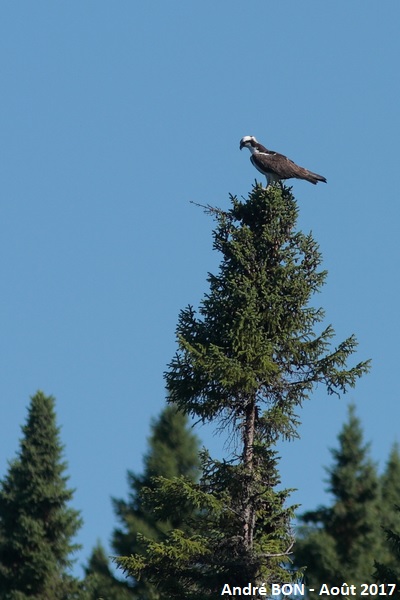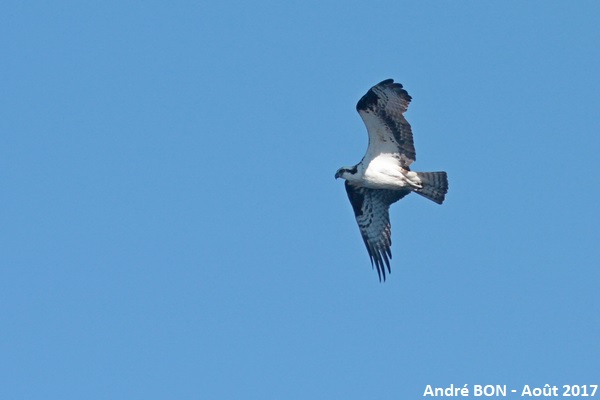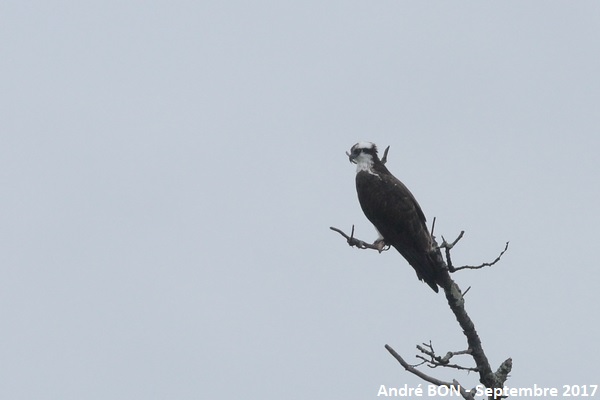


| Osprey (Pandion haliaetus (Linnaeus, 1758)) |



|
|
Scientific name: Pandion haliaetus (Linnaeus, 1758) Common name: Osprey French name: Balbuzard pêcheur Order: Accipitriformes Family: Pandionidae Size: Body size: 50 to 66 cm; Weight: 1.2 to 2 kg; Wingspan: 127 to 174 cm. Habitat: Banks of rivers, ponds and lakes and sea coasts. Food: Fishes caught on the surface of the water by diving claws forward. The preys are carried to a perch or to the nest to be eaten. Nesting: The nests built of branches are located high up with an unobstructed view, at the top of a tree, a pylon or on the edge of a cliff. There is a clutch of 2-3 eggs in April-May. Migration: European Ospreys winter in sub-Saharan Africa. North Asian Ospreys winter in Southeast Asia and India. North American Ospreys winter in Central or South America. Geographic area: All continents except Antarctica. |
The upperparts of the Osprey are shiny brown in colour. The underparts and the head are white in colour with some darker markings which vary according to the subspecies. The head is barred by a brown band at the eye level. In flight the wings appear angled and strongly digitized. |
| [To know more about the Osprey] [Next picture] [Top] |

|
The Némiskau pourvoirie, which provides access to 11 lakes including Lac Pal where we canoed, offers tailor-made stays for fishing enthusiasts. This Osprey observed on the bank must also appreciate the local grey or speckled trout. |
| [To know more about the Osprey] [Next picture] [Previous picture] [Top] |

|
No fishing for us, the calm and the observation of nature are enough for us and what a pleasure to see the Osprey pass in flight above our canoe! |
| [To know more about the Osprey] [Previous picture] [Top] |

|
While I was photographing this Osprey under a slightly grey sky, a local ornithologist showed me the nest located high up at a distance of a few tens of meters. |